Review for Flowers Of Evil
Introduction
Why is it that what’s critically acclaimed is so rarely popular? It’s not like critics deliberately choose something obscure to laud. “Let’s infuriate the plebs by liking something that will go completely over their heads...” When critics rate something, it’s because they actually do like the thing. But if the world worked that way, obscure French dramas would be at the top of the box office, while Transformers: Revenge of the Fallen would play to a minuscule niche in an arthouse cinema for one night only. So when MVM were transitioning from DVD to Blu-ray, they made sure to get the big hitting mass market favourites on Blu-ray, leaving the speciality audience titles on DVD. There’s a period from around that time where I have a lot of Blu-ray imports from Australia and the US, where audiences were larger in number for those obscure shows. I’ve imported shows like Dusk Maiden of Amnesia, Mysterious Girlfriend X and Kokoro Connect for Region B Blu-ray goodness, although when it came to Flowers of Evil, it was a show too obscure even for Australian audiences. While MVM released it as DVD only in the UK, thankfully Sentai’s US release is Region B compatible.
Takao Kasuga is a pretty normal schoolboy. He’s a little more introverted than his peers, and he loves reading, with a particular fascination for Baudelaire’s Fleurs de Mal, Flowers of Evil. He’s also got a crush on his class’s top student Saeki Nanako, although he prefers to think of her as his muse. Then one day after school, he finds Saeki has left her gym kit behind in class. And in a moment of temptation, he takes it. It’s something he comes to regret almost immediately, as his theft, and his fetishist behaviour has been witnessed by the class delinquent, Sawa Nakamura. The next day, the class is in an uproar about the ‘perverted theft’ leaving Kasuga no easy way to come clean, and then Nakamura confronts him with what she knows, and offers to keep his secret if he will sign a ‘contract’ with her. And so the blackmail begins...
The thirteen episodes of Flowers of Evil are presented across 2 Blu-rays from Sentai in a 9-4 distribution.
Picture
Flowers of Evil gets a 1.78:1 widescreen 1080p transfer on these discs. The image is clear and sharp throughout, with no particular signs of compression, although banding is more of a problem than on modern releases from Sentai Filmworks. You can tell that this is one of their earlier Blu-ray releases as the subtitles aren’t locked. Playback is smooth, and colours are strong and consistent. As mentioned, Flowers of Evil is an unconventional anime, using rotoscope techniques to capture the actor performances and transform them to animation. As such, the animation is a lot more fluid and energetic than traditional anime, character designs are as realistic as the human form gets, but detail tends to vanish at the middle distance, certainly facial features are really only well defined in close-up. It may not be traditional anime, but it works stupendously well to tell this dramatic and real-world story.
Sound
You have the sole option of a DTS-HD MA 2.0 Japanese Stereo audio track with optional translated subtitles. Given the nature of the animation, it’s no surprise that there is no English dub as lip-syncing is an issue here far more than the usual lip-flaps of traditional anime. Having said that, there are moments where the subtitles are a little too localised when it comes to pop culture references. One person can be recognised as saying “Captain Supermarket”, but the subtitles read Army of Darkness in one scene. It’s a dialogue heavy piece, but the stereo audio does a good job in conveying atmosphere. And the theme songs are exceedingly weird, but appropriately so. The subtitles are accurately timed and free of typos, and there are a fair few screen captions to explain references along the way, so pause might get pressed a few times.
Extras
You get 2 discs in a BD Amaray case, one on either inner face. The discs boot to static menus, with Disc 1 first autoplaying a trailer for The Anime Network.
They’re also light on extra features, with Disc 2 merely hosting trailers for MAOYU, Henneko: Hentai Prince and the Stony Cat, Samurai Bride, and Amnesia.
I still believe that this is one show that would have definitely benefitted from a Japanese making of featurette, showing how the unconventional (for anime) animation was accomplished. It’s also missing out on the usual textless credits.
Conclusion
I feel like I’ve just been hit by a truck... in a good way. I’ve spent more years than I care to contemplate watching and reviewing anime, and somewhere along the line I thought that I’d pretty much seen it all, or at least seen enough to be able to put a handle on the medium, to not be overly surprised by a new show, despite how it may be different from the other shows that are out there. Then Flowers of Evil comes along, almost derisively challenging me with a “you know nothing, you petty fool!” I love it when that happens. I have seen nothing like Flowers of Evil before, and that’s even after putting the controversial rotoscoped animation to one side. I haven’t seen a story like this told in anime before, it really could have been a live action series. In fact, reading around the show, it seems the reason the director opted for this form of animation rather than live action was that he wanted the show to be as much about the characters as possible, and with live action, he felt that the actors would get in the way of the characters. That may be doing the acting profession a disservice, but the resulting animation is amazing, the results are wholly successful, and Flowers of Evil is one of the best shows that I have seen in many a year.
It’s a school drama, but one played for a completely different dimension of realism than other anime, especially when it comes to the characters and the way they interact. It’s set at that coming of age, cusp point of childhood, when adolescents are beginning to discover who they really are through experimentation, misadventure and pretension. Teenagers at that age have big ideas, big dreams, big ambitions, but wind up crashing into the real world. As Flowers of Evil is set in an isolated town, hemmed in by mountains, and run down because of the economic downturn, for some teenagers, the town is more like a prison than a home.
That’s certainly true for the protagonist Takao Kasuga, who is the quiet, bookish but friendly kid in class, has a clique of friends, but would rather spend his time buried in the pages of a book, most notably Flowers of Evil by Baudelaire. He does what’s expected of him, but he thinks of the world in terms of himself and then everyone else, seeing other people as small-minded and conformist, that he alone really sees the world for what it is. Pretty much like most teenagers then, but he does have his muse in Nanako Saeki, the cutest girl in class, and about whom he harbours only the purest of affection, adoring her from afar, thinking of her in poetic terms. That’s until he happens upon her gym kit one day after class, and is witnessed stealing it by the class dropout Sawa Nakamura. Nakamura is the girl with the bad attitude, who is alone through choice, and who lets the authority figures in her life know exactly what she thinks of them in no uncertain terms. She’s just as derisory of the rest of the class, foul mouthed and confrontational, in essence she lives the kind of worldview that Kasuga thinks that he has.
When she spies Kasuga’s perversion, and his introverted nature, she thinks that she might have found someone with something in common with her, although to truly get Kasuga to understand her, she needs to get Kasuga to understand himself first, to remove the masks of conventionality, and to embrace the true pervert that he actually is. She starts by blackmailing him with her knowledge of his actions, but soon realises that the real key is Kasuga’s feelings for Saeki. She engineers an actual meeting between them, and moves things so that a relationship develops, albeit through the perverted prism that she insists of placing in front of Kasuga, actions which increasingly taint Kasuga’s pure vision of Saeki.
The thing about Saeki is that she may be the pretty one in class, she’s academically the most able, but she too has been following the path laid out for her, and her popularity hasn’t resulted in relationships or close friendships. So when Kasuga actually shows interest in her, it invites a response. Add to that, Kasuga is quiet, gentle, and kind to her, genuinely pays attention to who she is, and talks to her as a person rather than just as the cutest girl in class, and it all means that Kasuga’s interest is quickly returned. And Kasuga learns that Saeki is more than just a muse. Suddenly this relationship is actually developing, which conflicts Nakamura all the more, as she struggles to understand just what it is that she wants from Kasuga. A relationship triangle develops, but in a warped and unexpected way.
Flowers of Evil is a coming of age drama, unconventional love triangle, and expression of teen angst, rich in allegory, and visually arresting. It’s also paced in a wonderfully effective way that makes the most of its imagery and emotional weight. This is a show that can spend five minutes of an episode in silence, watching two people walk hand in hand through an empty town. But not a minute is wasted, every scene has meaning, every beat counts. The best way to describe it is live action in anime clothing. Its compelling character study is perfectly suited to this format, the drama engaging, the story enthralling. If it were live action, you could imagine Sion Sono directing the feature film. If Flowers of Evil does falter, it’s at the end. As so often happens in anime adaptations, we only get the first half of the story here. The anime leads up to a critical juncture in the story that is satisfying enough, but it’s the preview of a second season which strikes the wrong note, presented almost as a hallucination, or premonition. The story could have ended without that melange of imagery and be perfectly fine, but the sequence here is a little jarring in aspect. The utter downside is that despite the preview, the likelihood of a Flowers of Evil Season 2 is bleak indeed at this point. The flaw and the disappointment aside, Flowers of Evil is one of the best anime shows released this year. Just put aside all your preconceptions about anime first, and go into it expecting a realistic drama, and you’ll be thrilled by what it can do.
As for my thoughts with this second viewing; Flowers of Evil is just as raw and as hard-hitting an experience as before. The drama is pitched perfectly, capturing the teen angst and youthful pretension in a dead-end town brilliantly well. But I have to admit that I found the end of the series even more jarring than before, the wasted anticipation for a second season so out of place and deflating that I couldn’t help but leave the series a little disappointed. That’s despite it not putting a foot wrong for the first twelve episodes. MVM’s DVDs are really quite good when you come to think about it, but Sentai’s Blu-ray release is an early one from their auspices. Technically it’s just not as good as the discs they put out today, and no matter how detailed and fluid the animation is in HD, how much stronger the colours are, you can’t not notice the banding. Of course it’s better than the SD release, but not so much that you’d double dip at any cost.
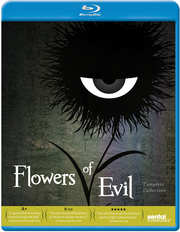
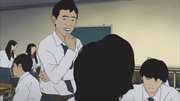







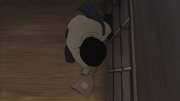

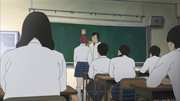




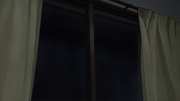
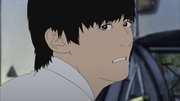
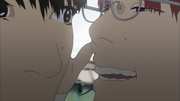
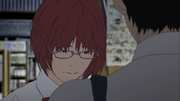
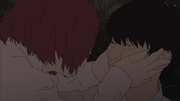
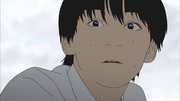
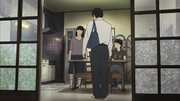

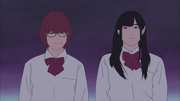

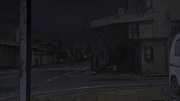


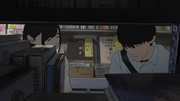
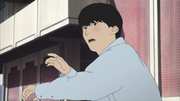
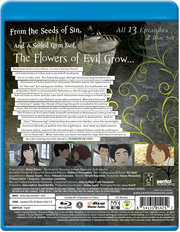






































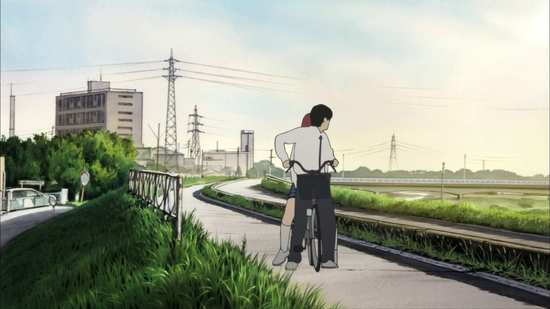




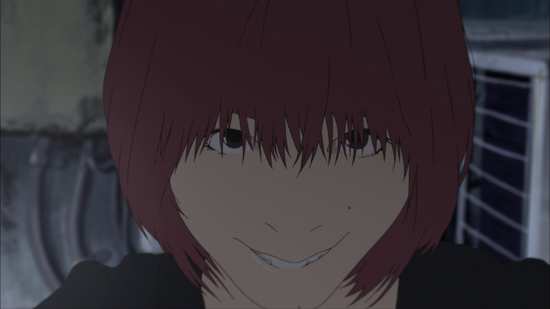
Your Opinions and Comments
Be the first to post a comment!